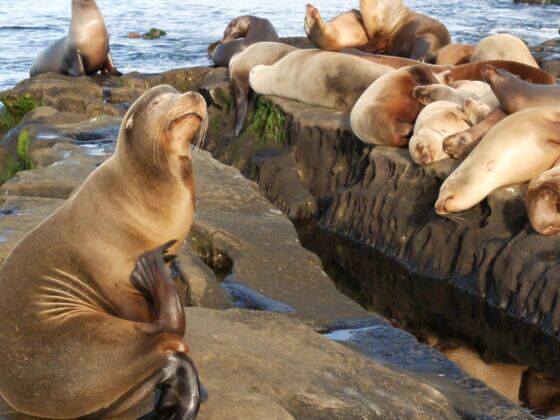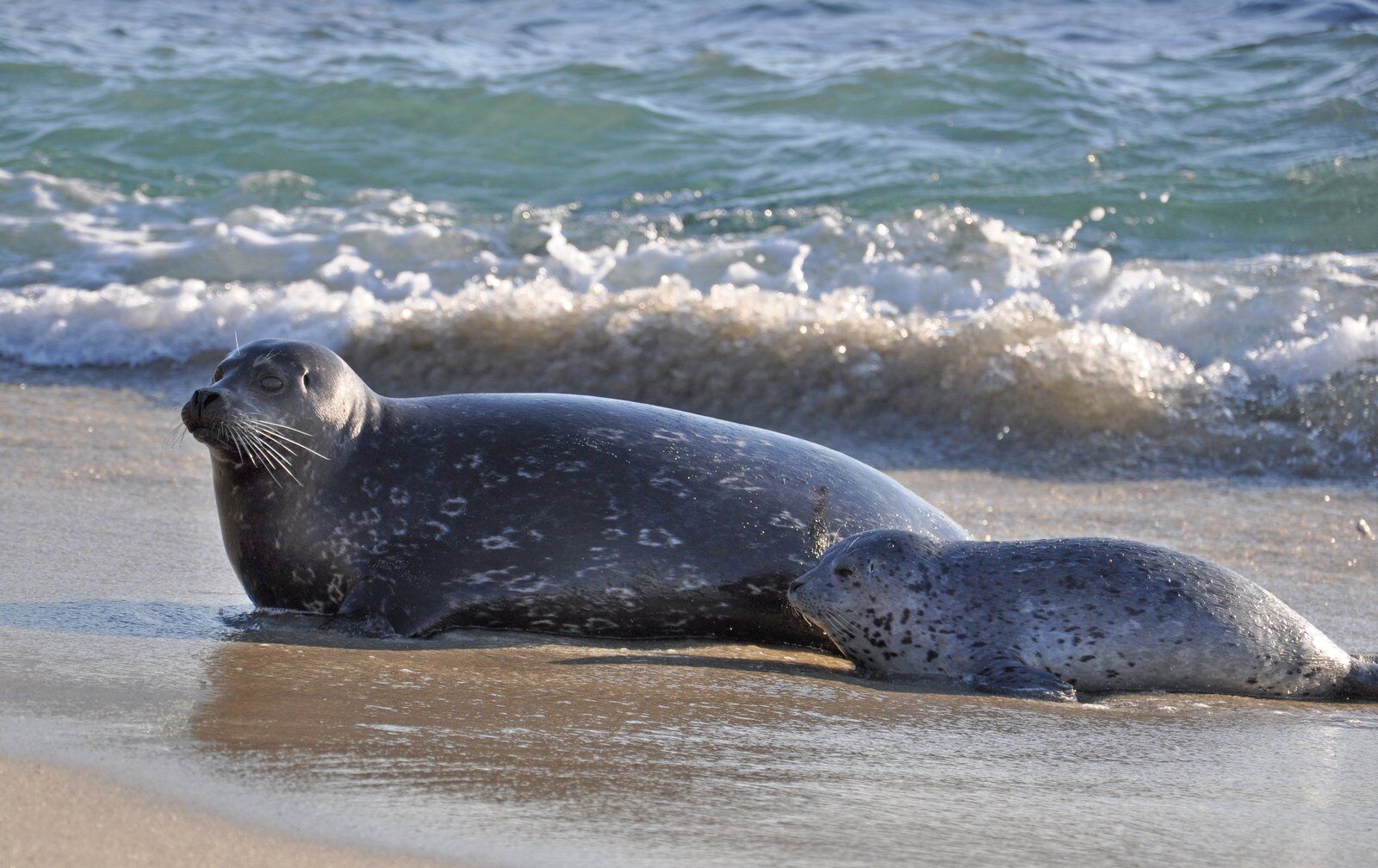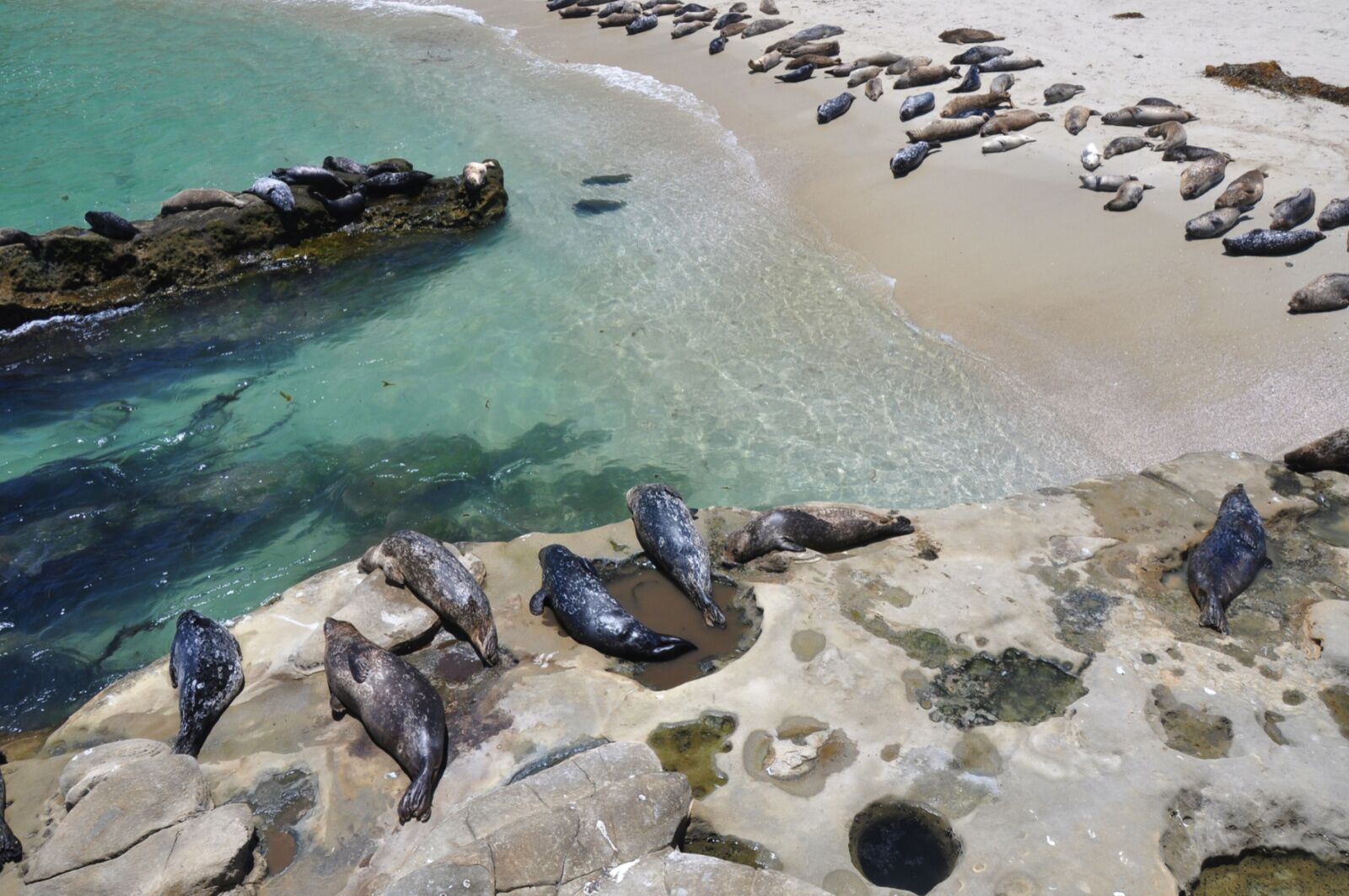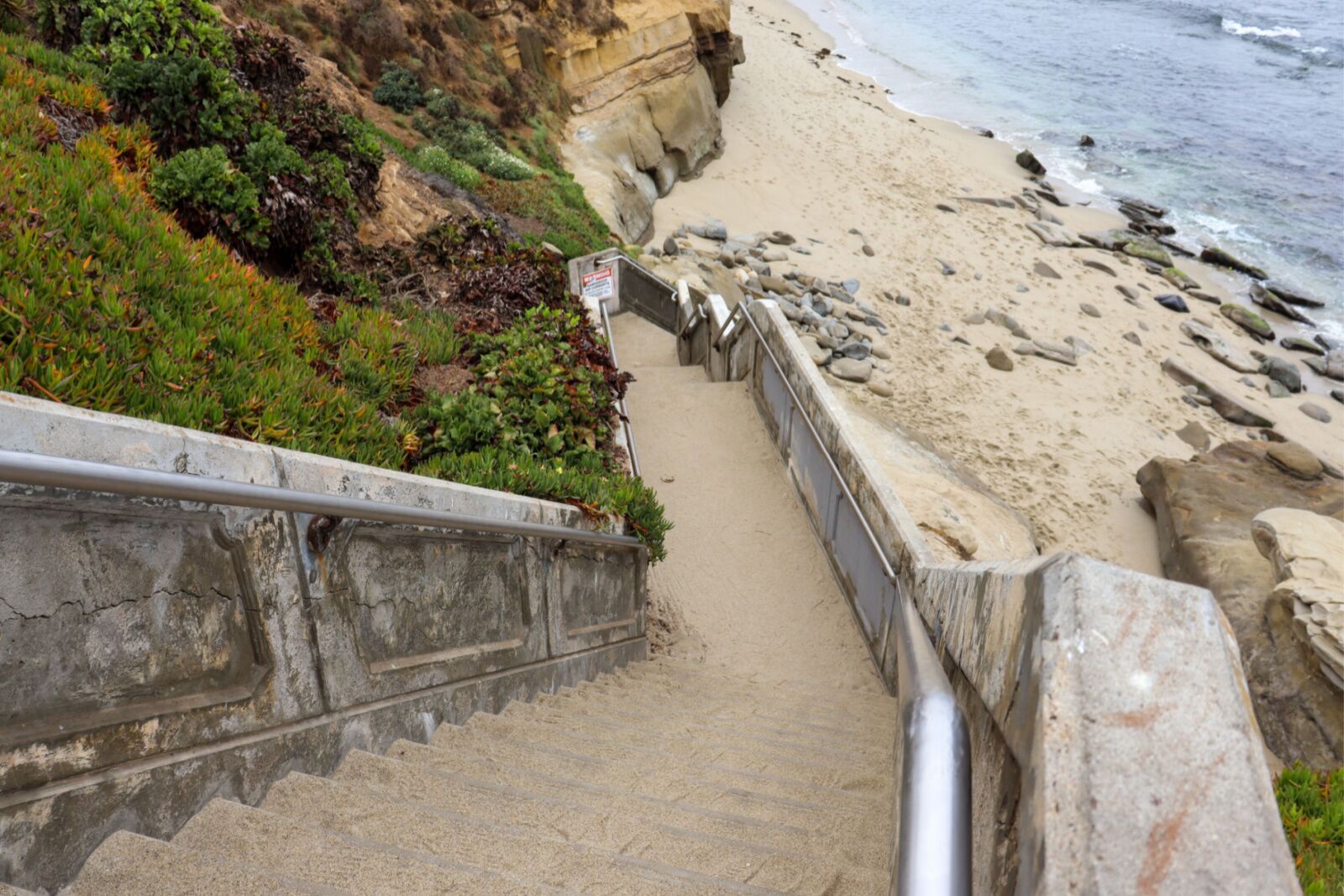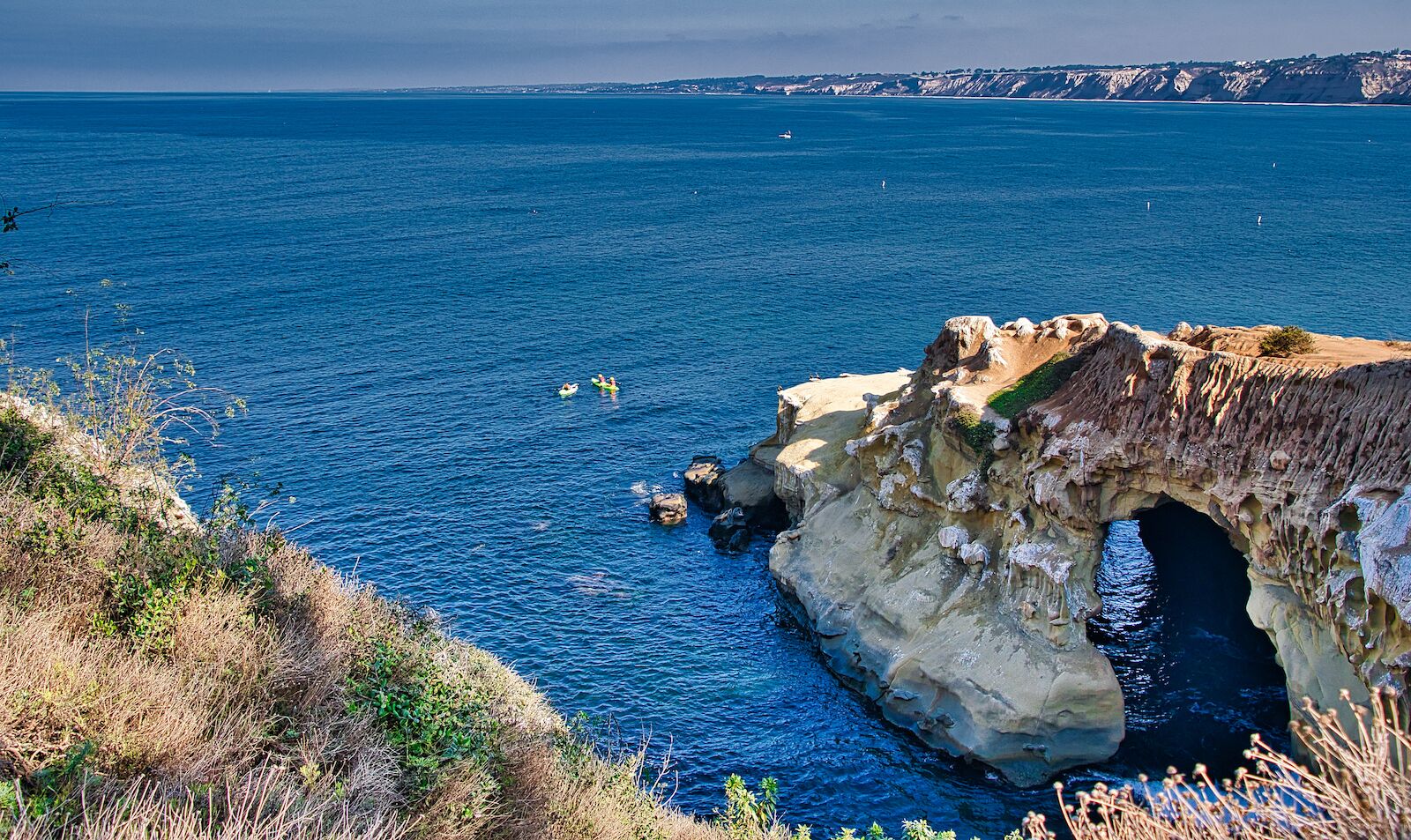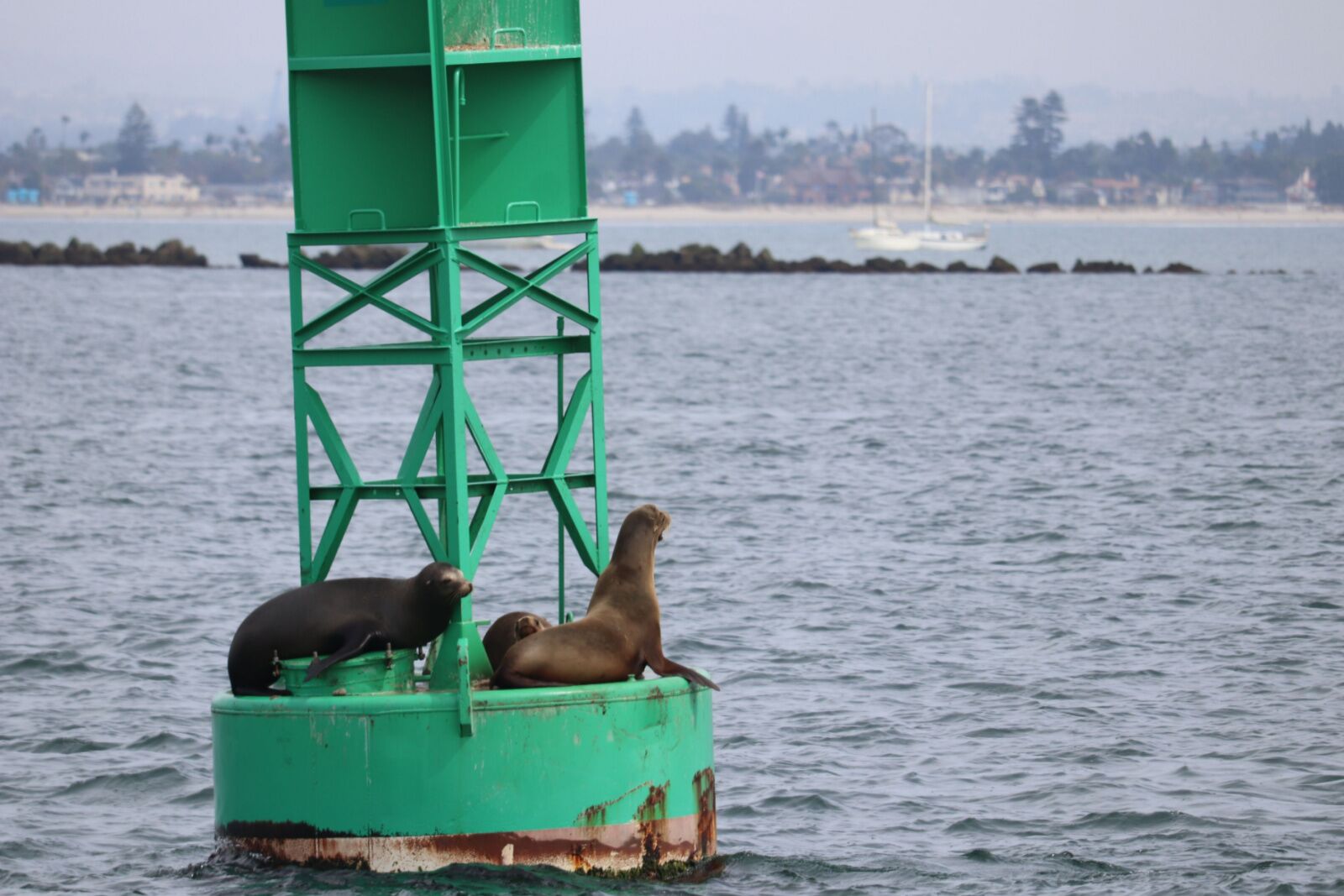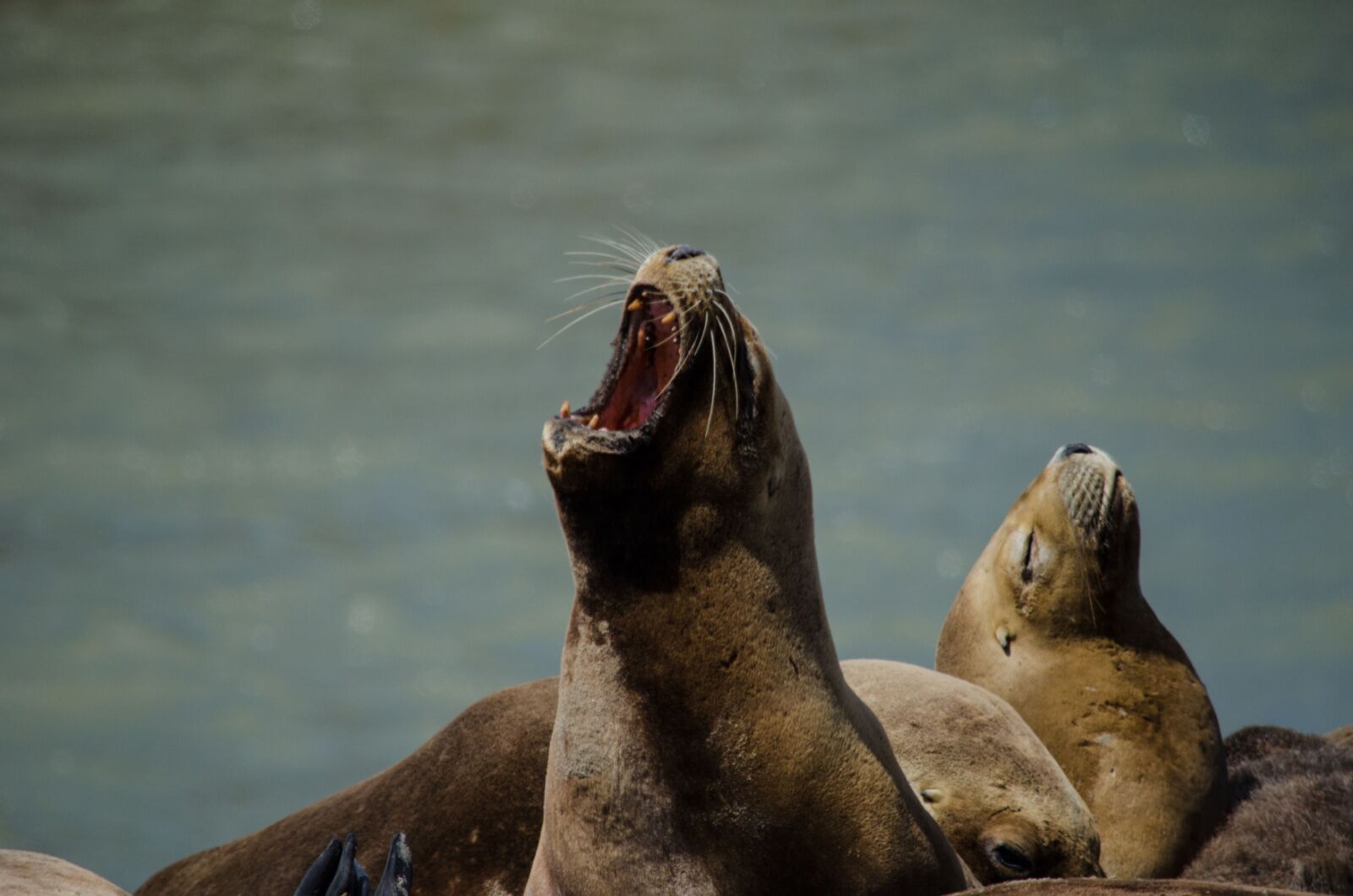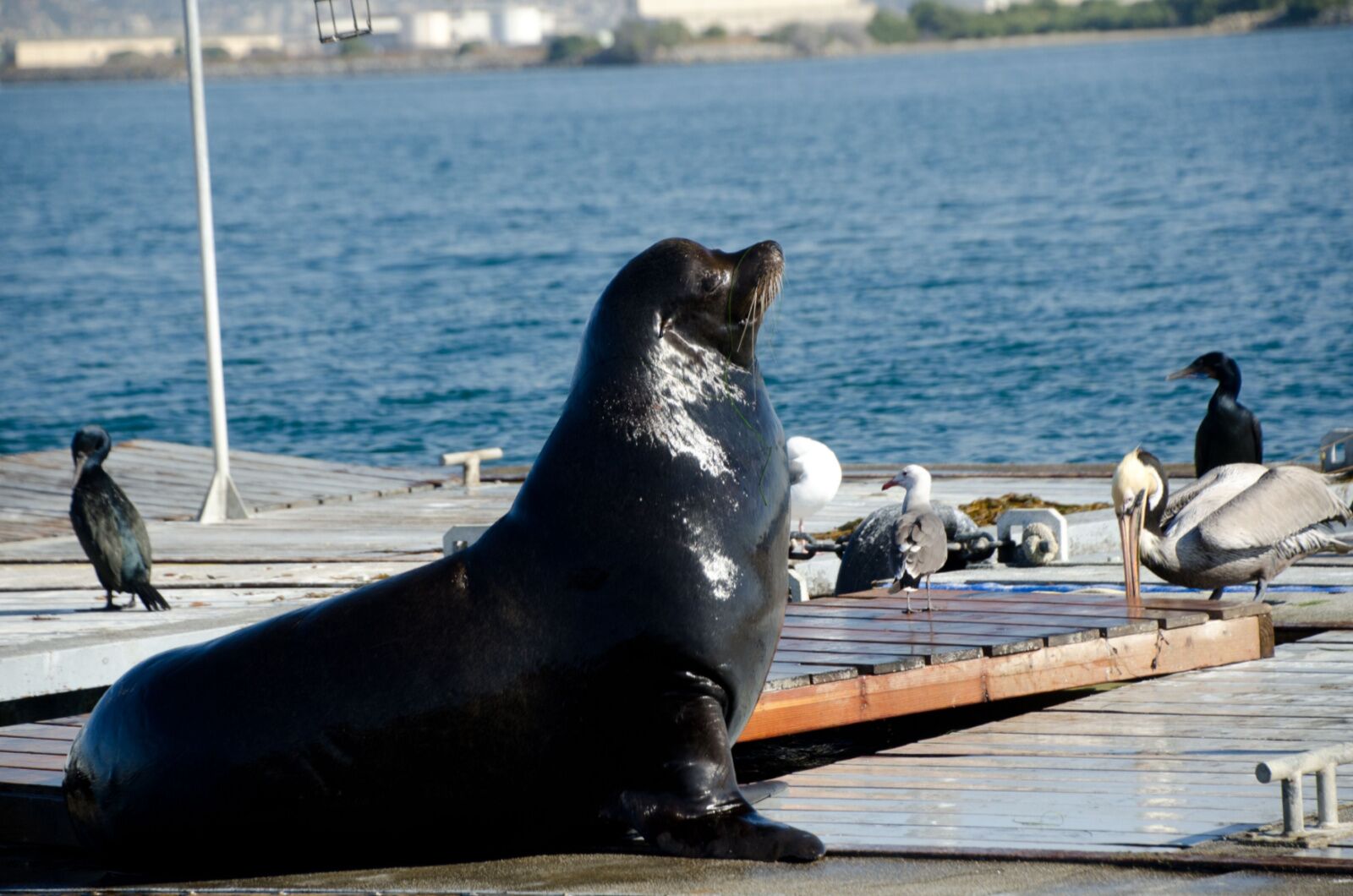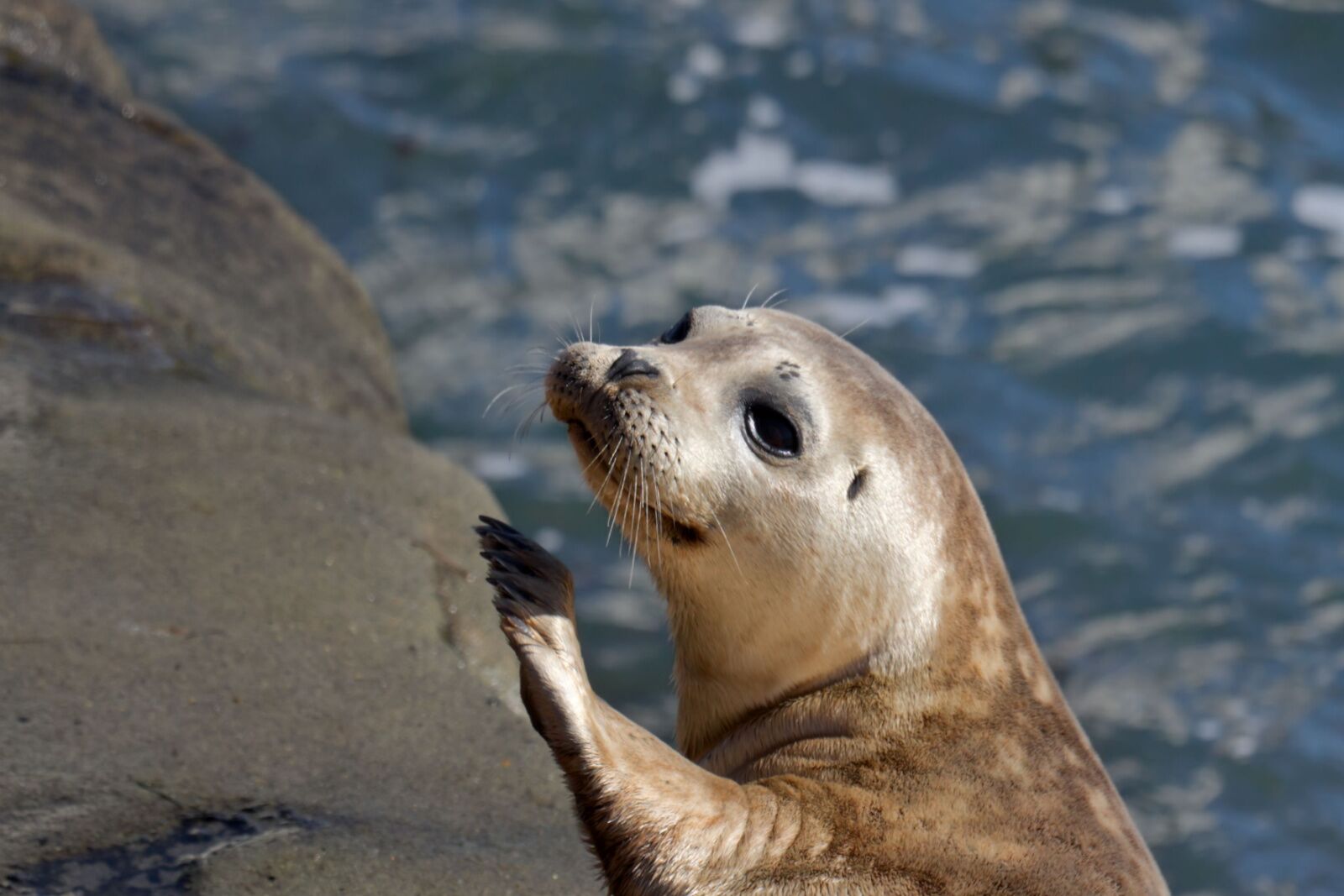San Diego’s coastal coves are teeming with sea lions and seals. They roll in the shallows, spar and play in the surf, and nurse pups on the shore to the delight of visitors.
However, their abundance draws major predators close to shore as well. It’s not unusual for juvenile great white sharks to cruise through the coastal waters looking for fish and larger prey, including the San Diego sea lions and seals. It makes for exciting close encounters for kayakers, surfers, snorkelers, and paddleboarders, but is also a reminder that the San Diego sea lions are part of a greater food web. It’s incredibly important for visitors not to interrupt the animals’ natural behaviors, both for their own safety and the protection of the natural balance.
